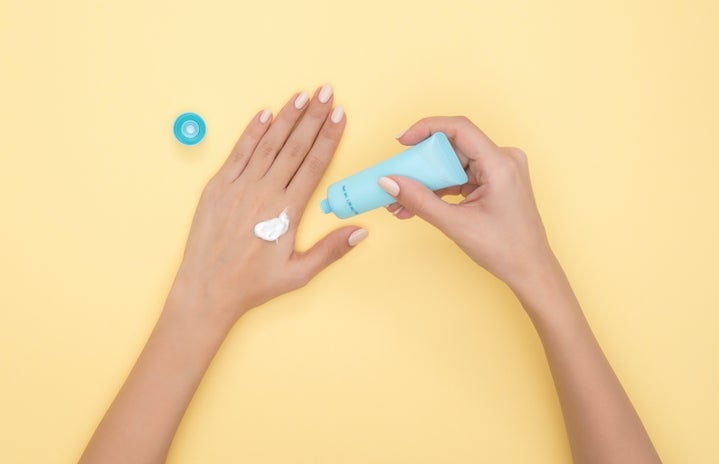Within the last year, the topic of sun protection as an essential step in your skincare routine has become a prominent theme on social media sites like TikTok, YouTube and Instagram. From a young age, we have all been told to wear sunscreen to prevent skin cancer, the advancement of aging skin and those painful sunburns. However, simply applying the Hawaiian Tropic that has been on sitting on your vanity for years has proven not to be enough protection from those UVA and UVB rays. The research behind the effectiveness of standard, chemical sunscreen is lacking in data regarding the levels of toxicity and potential long-term effects. Especially for acne-prone and sensitive skin, ingredients within chemical sunscreens are notorious for triggering breakouts, worsening existing acne and causing rashes.
Before you vow to stay out of the sun for the rest of your life, there is another solution to effectively protecting your skin. As people have become more conscious of the potential hazards of applying ill-researched products on their skin, mineral sunscreens have been put in the spotlight as the least harmful and most protective type of sun protection.
Unlike chemical sunscreens that are absorbed, mineral sunscreen sits on top of your skin. This is the final step in your skincare routine, as it functions as a physical barrier between your skin and those UVA/UVB rays while locking in your prior skincare steps. Sun protection with titanium dioxide or zinc oxide is “pure mineral products [that] work by blocking the sun’s rays by reflecting them away from the skin” (Neighmond & Neilson, 2019). Mineral sunscreens don’t have the same chalky and white cast that a lot of other sunscreens have, and some even come in a tinted variant.
The FDA has found that “of the 16 currently marketed active ingredients, two ingredients – zinc oxide and titanium dioxide – are GRASE for use in sunscreens; two ingredients – PABA and trolamine salicylate – are not GRASE for use in sunscreens due to safety issues. There are 12 ingredients for which there are insufficient safety data to make a positive GRASE determination at this time” (FDA, 2019). GRASE is the abbreviation for “generally recognized as safe and effective” (FDA, 2019).
The typical ingredients found in chemical sunscreens are “avobenzone, oxybenzone, octocrylene and ecamsule” (Neighmond & Neilson, 2019), which are among the group of ingredients the FDA has insufficient safety data to conclude whether or not the levels of toxicity have lasting negative effects.
Sunscreen is a must-have product for the preservation of your skin. Researching the ingredients list of products is essential to making sure your skincare is solving problems, rather than causing them.
Linked below are some tried and tested mineral sunscreens:
Super-Light Wrinkle Defense SPF 30
Redness Relief SPF 30 Mineral Moisturizer for Normal to Oily Skin
Supergoop! Zincscreen Mineral Lotion SPF 40
Dermalogica Invisible Physical Defense Sunscreen SPF 30
References:
“FDA Advances New Proposed Regulation to Make Sure That Sunscreens Are Safe and Effective.” U.S. Food and Drug Administration, FDA, 21 Feb. 2019.
Neighmond, Patti, and Susie Neilson. “Confused About Sunscreen Ingredients? Here’s What We’ve Learned.” NPR, NPR, 4 Aug. 2019.



